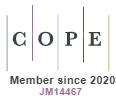A good city for a tourist is a good city for its inhabitant:
climate change adaptation for the tourism industry in Salvador da Bahia
DOI:
https://doi.org/10.5585/geas.v12i2.22625Keywords:
Tourism, Climate change, Adaptation measures, Nature-based solutions.Abstract
Objective: This article suggests possible adaptation measures to climate change in order to mitigate physical and economic impacts on Salvador's tourism industry, as well as on the city as a whole. In fact, tourism and urban dynamics are tightly bound.
Method: The chosen method to identify the adaptation measures was characterized by a bold participatory process that allowed the co-creation of a climatic impact chain that involved representatives from Salvador's academy, municipal administration, civil society, and the tourism business sector. The 5th Assessment Report (AR5), developed by the 2nd Working Group of the Intergovernmental Panel on Climate Change (IPCC), provided the conceptual framework of the research.
Originality/Relevance: The impact chain allowed the identification of climatic signals that threaten Salvador's tourism, which touristic attractions and services are more exposed to those threads, which local vulnerabilities contribute to making some risks real, and which capacities are already settled in the City or need to be developed in order to prepare the tourism industry to cope and adapt to climate change impacts.
Results: The results of this research confirmed that any adaptation measure for tourism activity is inseparable from the adaptation measures for a city as a whole, reaffirming the maxim that "a good city for a tourist is a good city for its inhabitant."
Social/management contributions: Demonstrates how urban interventions which improves thermic wellbeing, shade, storm shelter, efficient drainage (and so on) in public spaces guarantee benefits to both inhabitants and tourists.
Downloads
References
Ackermann, F., & Eden, C. (2011). Strategic management of stakeholders: Theory and practice. Long Range Planning, 44(3), 179-196. https://doi.org/10.1016/j.lrp.2010.08.001
Acuti, D., Laura, G., Mazzoli, V., & Aiello, G. (2019). Stakeholder engagement in green place branding: A focus on user-generated content. Corporate Social Responsibility and Environmental Management, 26(2), 492-501. https://doi.org/10.1002/csr.1703
Atelier Starzak Strebicki. (2019). Green Oasis - Courtyard City Hall. https://www.starzakstrebicki.eu/en/project/courtyard-city-hall/
Bardin, L. (2011). Análise de conteúdo. São Paulo: Edições 70.
Beck D., & Storopoli, J. (2021). Cities through the lens of stakeholder theory: A literature review. Cities, 38(11), 1-12. https://doi.org/10.1016/j.cities.2021.103377
Bellato, L., Frantzeskaki, N., & Nygaard, C. A. (2023). Regenerative tourism: A conceptual framework leveraging theory and practice. Tourism Geographies. An International Journal of Tourism Space, Place and Environment, 25(4), 1026-1046. https://doi.org/10.1080/14616688.2022.2044376
Bordim, M. H. S., Longo, R. M., & Bordim, B. S. (2022). Sustentabilidade ambiental urbana: análise da influência da vegetação em parâmetros ambientais. Revista de Gestão Ambiental e Sustentabilidade – GeAS, 11(1), 1-24. https://doi.org/10.5585/geas.v11i1.19447
Bowen, K. J., & Friel, S. (2012). Climate change adaptation: Where does global health fit in the agenda?. Global Health, 8(10), 1-7. https://doi.org/10.1186/1744-8603-8-10
Byrd, E. T. (2007). Stakeholders in sustainable tourism development and their roles: Applying stakeholder theory to sustainable tourism development. Tourism Review, 62(2), 6-13. https://doi.org/10.1108/16605370780000309
CDP-ICLEI Track. (2021). 2019 Cities adaptation actions. [Base de dados] https://data.cdp.net/Adaptation-Actions/2019-Cities-Adaptation-Actions/j9r7-pm45
Pew Research Center. (2018). American trends panel Wave 26 [Data set]. https://www.pewsocialtrends.org/dataset/american-trends-panel-wave-26/
Chersich, M. F., Wright C. Y, Venter F., Rees, H., Scorgie, F. & Erasmus, B. (2018). Impacts of climate change on health and wellbeing in South Africa. International Journal of Environmental Research and Public Health, 15(9), 1884. https://doi.org/10.3390/ijerph15091884
Clarkson, M. E. (1995). A stakeholder framework for analyzing and evaluation corporate social performance. The Academy of Management Review, 20(1), 92-117. https://doi.org/10.5465/amr.1995.9503271994
Consórcio Salvador Smart City. (2020). Plano Diretor de Tecnologias da Cidade Inteligente. SEMGE - Prefeitura de Salvador. https://semit.salvador.ba.gov.br/plano-diretor-de-tecnologias-traca-estrategias-e-acoes-para-tornar-salvador-uma-cidade-inteligente/
Crouch, G., & Ritchie, J. R. B. (2000). Tourism, competitiveness and societal prosperity. Journal of Business Research, 44(3), 137-152. https://doi.org/10.1016/S0148-2963(97)00196-3
Demuzere, M., Orru, K., Heidrich, O., Olazabal, E., Geneletti, D., Orru, H., Bhave, A. G., Mittal, E., Feliu, E., Faehnle, M. (2014). Mitigating and adapting to climate change: Multi-functional and multi-scale assessment of green urban infrastructure. Journal of Environmental Management, (146), 107-115. https://doi.org/10.1016/j.jenvman.2014.07.025
Emilsson, T., & Sang, A. O. (2017). Impacts of climate change on urban areas and nature-based solutions for adaptation. In N. Kabisch, H. Korn, J. Stadler, & A. Bonn (Ed.) Nature‐based Solutions to Climate Change Adaptation in Urban Areas. (pp. 15-27). Springer. https://doi.org/10.1007/978-3-319-56091-5_2
European Commission. Directorate-General for Research and Innovation, (2021). Evaluating the impact of nature-based solutions: A summary for policy makers. European Commission. Directorate-General for Research and Innovation. https://data.europa.eu/doi/10.2777/521937
Fraga, R., & Sayago, D. A. V. (2020). Soluções baseadas na natureza: Uma revisão sobre o conceito. Revista de Parcerias Estratégicas, 25(50), 67-82.
Freeman, R. E, Harrison, J. S., Wicks, A. C., Parmar, B. L., & Colle, S. (2010) Stakeholder theory: The state of art. Cambridge University Press.
Fundação Grupo Boticário de Proteção à Natureza. (2017). Soluções baseadas na Natureza. P22ON. http://www.p22on.com.br/wp-content/uploads/2017/12/P22ON_DEZEMBRO-2017-edfinal.pdf
Gadda, T. M. C., Vellozo, L. D., Stoberl, A. P. M., & Diaz, L.T. (2019). Trajetória do conceito soluções baseadas na natureza e a relação com o Brasil: Uma análise bibliográfica. In F. Santos (Org.). Geografia no Século XXI (Vol.5, pp.61-73). Editora Poisson.
Gehl, J. (2010). Cities for people. Island Press.
GIZ & EURAC. (2017). Risk supplement to the vulnerability sourcebook: Guidance on how to apply the vulnerability sourcebook’s approach with the new IPCC AR5 concept of climate risk. https://www.adaptationcommunity.net/wp-content/uploads/2017/10/GIZ-2017_Risk-Supplement-to-the-Vulnerability-Sourcebook.pdf
Grimm, I. J. (2019). Impactos das mudanças climáticas no sistema turístico: O caso brasileiro. Caderno Virtual de Turismo, 19(1), http://dx.doi.org/10.18472/cvt.19n1.2019.1392
Helix. (2016). Mobiles Grünes Zimmer. Helix Pflanzen GmbH. https://www.helix-pflanzen.de/pflanzensysteme/produkte/mobiles-gruenes-zimmer
Intergovernmental Panel on Climate Change. (2014). Climate Change 2014: Impacts, Adaptation and Vulnerability: Part A: Global and Sectoral Aspects: Volume 1, Global and Sectoral Aspects: Working Group II Contribution to the IPCC Fifth Assessment Report. Cambridge University Press. https://www.ipcc.ch/site/assets/uploads/2018/02/WGIIAR5-PartA_FINAL.pdf
Lafortezza, R., Chen, J., Bosch, C. K., & Randrup, T. B. (2018). Nature-based solutions for resilient landscapes and cities. Environmental Research, 165, 431-441. https://doi.org/10.1016/j.envres.2017.11.038
Lei nº 9187, de 17 de janeiro de 1917. Dispõe sobre o Plano Diretor de Arborização Urbana do Município de Salvador. https://leismunicipais.com.br/a/ba/s/salvador/lei-ordinaria/2017/919/9187/lei-ordinaria-n-9187-2017-dispoe-sobre-o-plano-diretor-de-arborizacao-urbana-do-municipio-de-salvador
Mihalic, T. (2000). Environmental management of a tourist destination: A factor of tourism competitiveness. Tourism Management, 21(1), 65-78. https://doi.org/10.1016/S0261-5177(99)00096-5
Ministério do Meio Ambiente. (2018). Integração da adaptação baseada em Ecossistemas (AbE) no planejamento de desenvolvimento: Uma formação orientada para prática baseada no Guia de Políticas da OCDE. [Apostila do curso]. https://www.gov.br/mma/pt-br/assuntos/ecossistemas-1/arquivos/arquivo-3-apostila-curso-abe-novo.pdf
Pahl-Wostl, C. (2007). Transitions towards adaptive management of water facing climate and global change. Water Resource Management, 21, 49-62. https://doi.org/10.1007/s11269-006-9040-4
Prefeitura Municipal do Salvador. (2018). Manual Técnico de Arborização Urbana de Salvador com espécies nativas da Mata Atlântica. http://sustentabilidade.salvador.ba.gov.br/wp-content/uploads/2019/09/Manual_Tecnico_de_Arborizacao_de_Salvador.pdf
Prefeitura Municipal do Salvador. (2020a). Plano Salvador 500. http://biblioteca.fmlf.salvador.ba.gov.br/phl82/pdf/Salvador500/Cenarios.pdf
Prefeitura Municipal do Salvador. (2020b). Salvador Plano de Ação Climática. http://sustentabilidade.salvador.ba.gov.br/wp-content/uploads/2020-/12/Salvador_Plano_de_Acao.pdf
Prefeitura Municipal do Salvador. (2019). Salvador resiliente: Uma estratégia abrangente, integrada e de longo prazo, para tornar Salvador resiliente. http://salvadorresiliente.salvador.ba.gov.br
Prefeitura Municipal do Salvador & Embyá. (2020c). Versão preliminar do PMMA de Salvador. Planos Municipais da Mata Atlântica. https://pmma.etc.br/versao-preliminar-do-pmma-de-salvador/
Raderschall. (2001). MFO-Park. raderschallpartner ag - landschaftsarchitekten bsla sia. https://www.raderschall.ch/projekte/parks/mfo11.php
Rice, L. (2020). Nature-based solutions for urban development and tourism. International Journal of Tourism Cities, 6(2), 431-448. https://doi.org/10.1108/IJTC-05-2019-0069
Roux, D. J., Rogers, K. H., Biggs, H. C., Ashton, P. J., & Sergeant, A. (2006). Bridging the science–management divide: Moving from Unidirectional knowledge transfer to knowledge interfacing and sharing. Ecology & Society, 11(1), 4. https://doi.org/10.5751/ES-01643-110104
Ruiz-Mallén, I. (2019). Co-production and resilient cities to climate change. In J. Nared & D. Bole (Eds.), Participatory Research and Planning in Practice (pp. 1-11). Springer Open. https://doi.org/10.1007/978-3-030-28014-7
Schoeler, M. L. (2021). Introdução a soluções verdes e baseadas em ecossistemas nas edificações. http://sustentabilidade.salvador.ba.gov.br/wp-content/uploads/2021-/06/Caderno_ABE_2021.pdf
Secretariat of the Convention on Biological Diversity. (2009). Connecting Biodiversity and Climate Change Mitigation and Adaptation: Report of the Second Ad Hoc Technical Expert Group on Biodiversity and Climate Change. Convention on Biological Diversity. https://www.cbd.int/doc/publications/cbd-ts-41-en.pdf
Silva, A. M. A., Lazaro, L. L. B., Andrade, J. C. S., Prado, A. F. R., Ventura, A. C., Campelo, A., & Tridello, V. (2022). Examining the urban resilience strategy of Salvador, Bahia, Brazil: A comparative assessment of predominant sectors within the resilient cities network. Journal of Urban Planning and Development, 148(2), 1-11. http://doi.org/10.1061/(ASCE)UP.1943-5444.0000818
Thomas, F., Sabel, C.E., Morton, K., Hiscock, R. & Depledge, M. H. (2014). Extended impacts of climate change on health and wellbeing. EnvironmentErro! A referência de hiperlink não é válida.al Science & Policy, 44, 271-278. https://doi.org/10.1016/j.envsci.2014.08.011
Tompkins, E. L.; & Adger, W.N. (2004). Does adaptive management of natural resources enhance resilience to climate change? Ecology and Society, 9(2): 10. http://www.ecologyandsociety.org/vol9/iss2/art10
Tompkins, E. L., Adger, W. N., Boyd, E., Nicholson-Cole, S., Weatherhead, K., & Arnelle, N. (2010). Observed adaptation to climate change: UK evidence of transition to a well-adapting society. Global Environmental Change, 20(4), 627-635. https://doi.org/10.1016/j.gloenvcha.2010.05.001
Tridello, V. , Spinola, C.de A., Campelo, A., Pinheiro, T.C, Eucker, D. (2021, Dezembro). 50 Boas Ideias para um TURISMO + RESILIENTE em Salvador. SECIS Prefeitura de Salvador. https://www.adaptacao.eco.br/_biblioteca/50-boas-ideias-para-um-turismo-resiliente-em-salvador/
Wilby, R. L. (2007). A review of climate change impacts on the built environment. Built Environment, 33
Downloads
Published
How to Cite
Issue
Section
License
Copyright (c) 2023 Autores

This work is licensed under a Creative Commons Attribution-NonCommercial-ShareAlike 4.0 International License.









